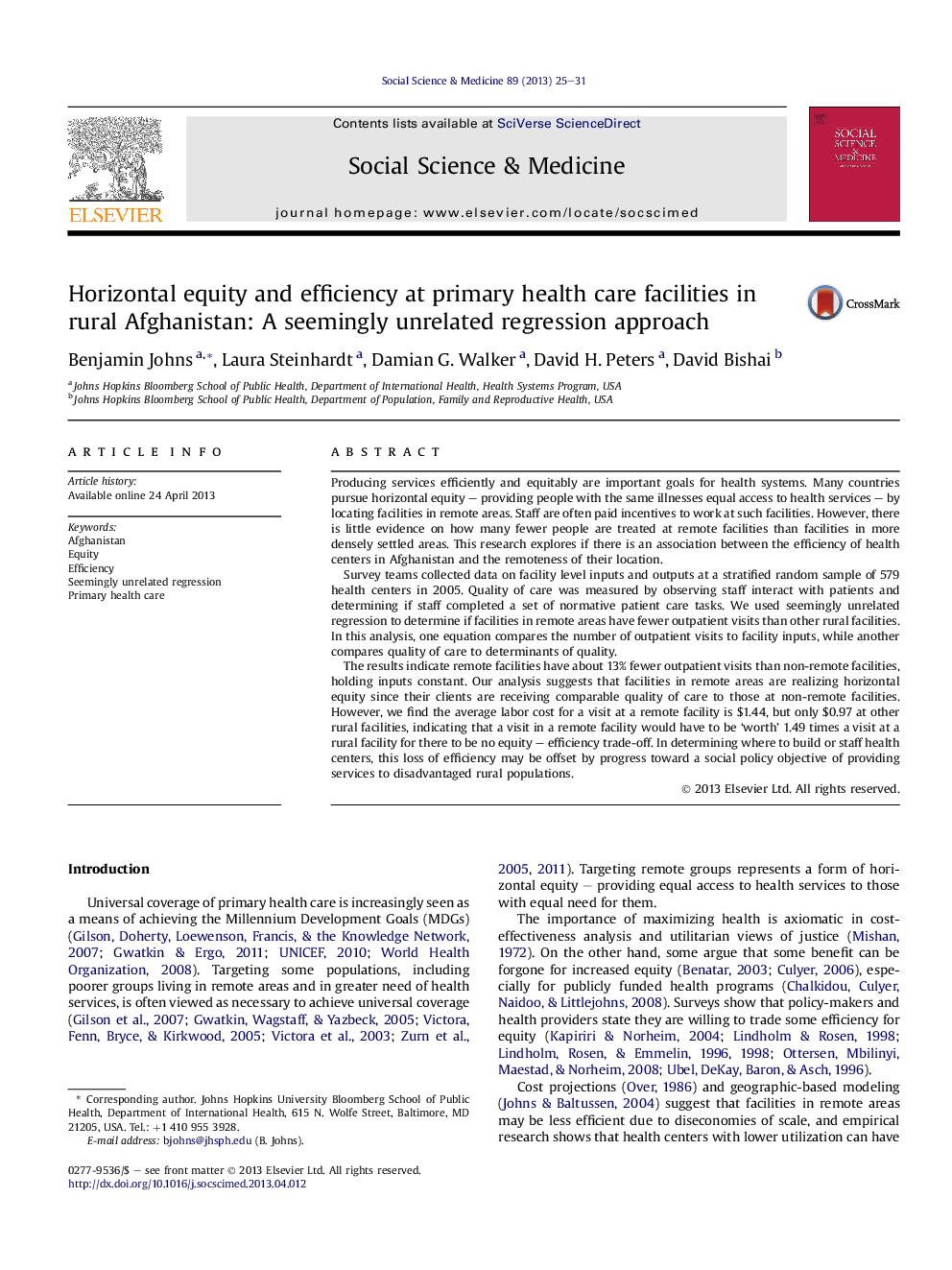| کد مقاله | کد نشریه | سال انتشار | مقاله انگلیسی | نسخه تمام متن |
|---|---|---|---|---|
| 952303 | 1476079 | 2013 | 7 صفحه PDF | دانلود رایگان |
• Primary health facilities in remote areas have 13–14% fewer visits than similar facilities in rural areas in Afghanistan.
• Remote facilities have about 50% more salary costs for an outpatient visit than comparable facilities in rural areas.
• Results suggest a trade-off between the provision of lowest cost services and of equal access for the entire population.
Producing services efficiently and equitably are important goals for health systems. Many countries pursue horizontal equity – providing people with the same illnesses equal access to health services – by locating facilities in remote areas. Staff are often paid incentives to work at such facilities. However, there is little evidence on how many fewer people are treated at remote facilities than facilities in more densely settled areas. This research explores if there is an association between the efficiency of health centers in Afghanistan and the remoteness of their location.Survey teams collected data on facility level inputs and outputs at a stratified random sample of 579 health centers in 2005. Quality of care was measured by observing staff interact with patients and determining if staff completed a set of normative patient care tasks. We used seemingly unrelated regression to determine if facilities in remote areas have fewer outpatient visits than other rural facilities. In this analysis, one equation compares the number of outpatient visits to facility inputs, while another compares quality of care to determinants of quality.The results indicate remote facilities have about 13% fewer outpatient visits than non-remote facilities, holding inputs constant. Our analysis suggests that facilities in remote areas are realizing horizontal equity since their clients are receiving comparable quality of care to those at non-remote facilities. However, we find the average labor cost for a visit at a remote facility is $1.44, but only $0.97 at other rural facilities, indicating that a visit in a remote facility would have to be ‘worth’ 1.49 times a visit at a rural facility for there to be no equity – efficiency trade-off. In determining where to build or staff health centers, this loss of efficiency may be offset by progress toward a social policy objective of providing services to disadvantaged rural populations.
Journal: Social Science & Medicine - Volume 89, July 2013, Pages 25–31
